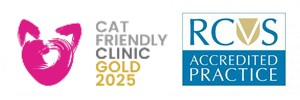Diagnostic imaging is an essential component of the work-up of many cases; in many instance a combination of different techniques may be required. The imaging department at the QVSH offers a range of up-to-date imaging equipment, including a digital radiography (CR) system, high-resolution ultrasound machines and a gamma camera for nuclear scintigraphy. In addition to imaging of cases examined at QVSH, the Diagnostic Imaging section also provides a rapid radiological reporting service for veterinary practices with reports faxed or phoned through to the referring vet.
Radiography
Radiography equipment at the QVSH comprises a powerful gantry-mounted unit and a small portable unit for taking x-rays of extremities on visits to the owners’ premises. These allow us to obtain radiographs of high diagnostic quality of most parts of the horse’s body, including the upper limbs, neck and chest. The state-of-the-art computerised radiography system permits detailed image manipulation, thereby increasing its value over conventional film-based radiography.
Ultrasonography
We have 2 diagnostic ultrasound machines with ability to perform colour flow doppler examinations, allowing a complete range of examinations to be performed. Ultrasonography has become one of the most important tools used in the examination of the musculoskeletal system in horses with orthopaedic diseases. Linear array scanning probes are used most frequently in the evaluation of tendons and ligaments; sector scanning is used to evaluate abdominal diseases (eg. colics, weight loss, liver disease) and thoracic disease (eg. heart conditions, pleuropneumonia). Trans-rectal scanning is a crucial component of reproductive medicine, aiding pregnancy diagnosis and routine pre-breeding assessment.
Nuclear Scintigraphy (Bone Scan)
Nuclear scintigraphy is a diagnostic imaging technique that is used to measure the metabolic activity in bone. A radioactive isotope (technetium-99m) is injected into the horse intravenously and after 2-3 hours, the emitted radiation is captured by an external gamma camera to produce an image. Areas that have increased radiation in the images indicate that there is increased uptake of the radioactive compound, meaning that there is increased bone activity in that specific area. Increased uptake is often due to tissue damage in that location, which may not be visible on x-rays, or may be in an area of the horse that is inaccessible to x-ray, for example the upper limbs, pelvis or back.
The most common indication for performing a bone scan is as part of a lameness examination, or as part of evaluation of some neurological cases. This non-invasive procedure is performed with the patient standing under light sedation. As the drug being administered is radioactive, horses are hospitalized and confined to a restricted area(stable) for 48 hours after the injection, and owners are not permitted to visit the horse during this period. Once there has been sufficient radiation decay, as detected by a Geiger counter, the horse is returned to a normal box, or discharged. Nuclear scintigraphy is a very safe procedure and is performed routinely in human medicine; the single dose of radiation that the horse is exposed to poses no risk to its health.


